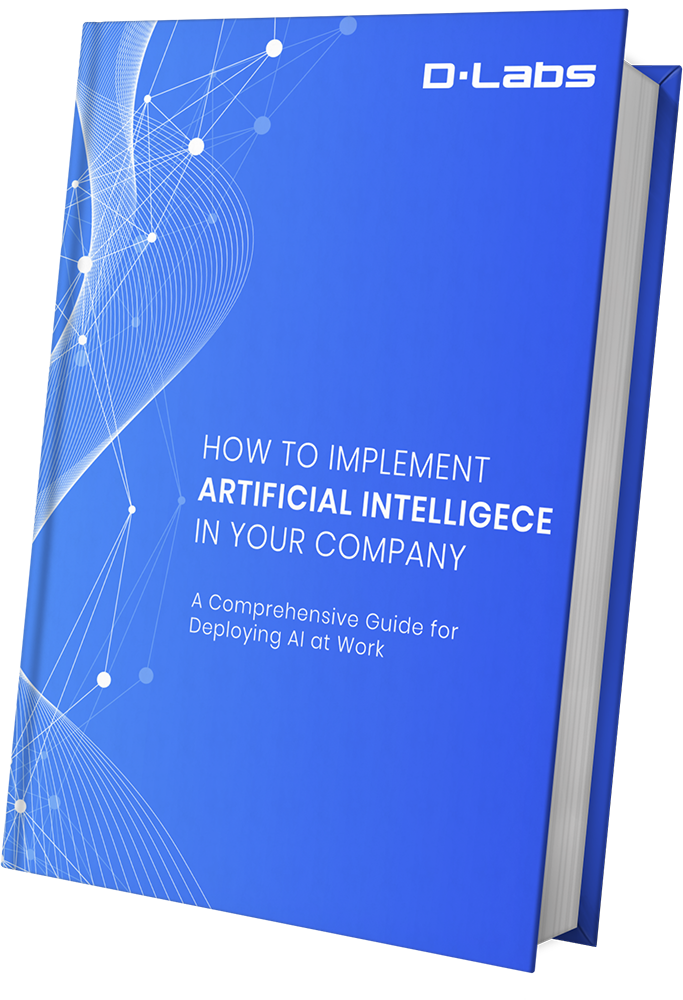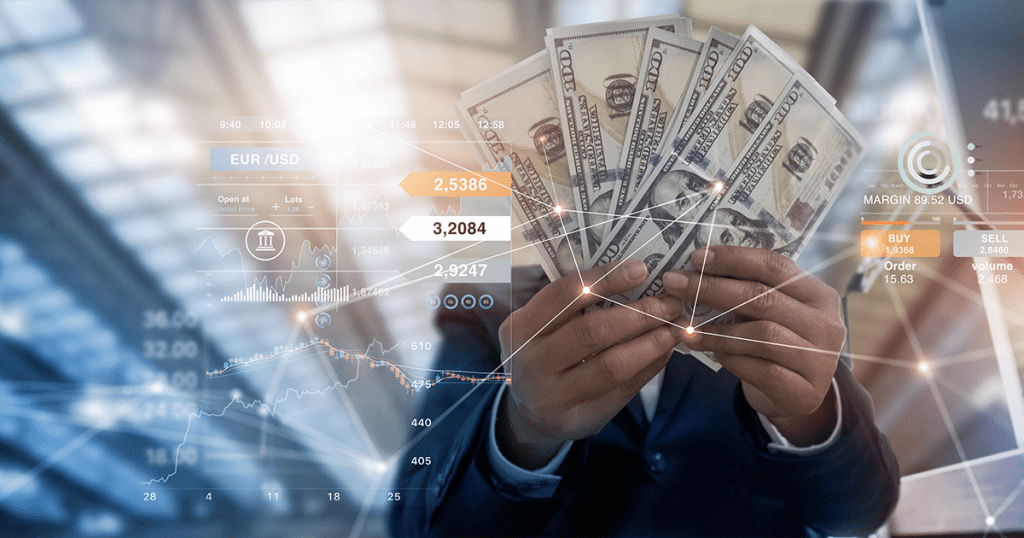The market for artificial intelligence-based solutions in retail is expected to hit $24.1 billion by 2028. Why such growth? Well.
Artificial intelligence helps retailers analyze big data, meaning they can run better marketing campaigns, improve logistics, and, of course, optimize prices. And given that price is a crucial factor in the customer’s buying decision, accurate pricing is hugely valuable to any business.
In this post, you’ll learn how AI for price optimization works and how it can benefit your business. Ready?
Let’s dive in.
Price optimization in retail: how does it work?
Price optimization in retail uses mathematical and marketing analysis to determine how customers will react to different price points for a company’s products and services across channels.
Businesses can also use it to work out the pricing strategy that best fits a specific goal, such as maximizing profit. To optimize prices, you can use data from competitor analysis, surveys, operational cost analysis, and historical prices. But these days, more and more companies rely on AI to manage their pricing strategy.
After all — imagine you run a supermarket chain with some stores in city centers and others in residential areas. You can’t expect employees to nip out, check competitor prices, review each store’s sales history, then recalculate the price of every product (and you definitely can’t expect them to factor in aspects like store location, weather, and the time of the day).
But you can expect software to do this. Which is why thousands of retailers worldwide rely on artificial intelligence to automate price optimization.
To find out more about what price prediction is, how it works and in which industries it works, read the article: Price Prediction: How Machine Learning Can Help You Grow Your Sales
AI in retail: why is it important?
Retail companies implement AI-based solutions to improve the customer experience and boost sales. Here are three specific areas where AI can help.
AI can improve price optimization
In the digital realm, prices change by the second. So it’s impossible to track the movements manually, then update your own prices accordingly. On the other hand, neural networks can adjust prices based on multiple factors, even on a customer-by-customer basis.
Suppose an online shopper adds an item to their cart but doesn’t check out: AI can encourage them to complete the purchase by offering an attractive discount the very next day.
AI can help boost sales
In digital, personalization is key. So instead of offering a one-size-fits-all solution, why not use technology to build a solution that truly reflects your customers’ needs?
Recommendation engines help retailers personalize the shopping experience for every shopper, showing each one the goods they’re likely to buy. AI can even automate personalized emails, sending special offers and discounts on selected items.
DLabs.AI has created one such solution for a retail client. The company in question had upwards of 20,000,000 customers in its database. And the executive team wanted a way to predict their customers’ buying behavior to improve how they designed promotions.
We prepared machine learning models based on a vast table, called CSV (Customer State Vector), which updates weekly.
The table contains about 2,000 variables across three data types:
- Transactional data (548 variables)
- Behavioral and demographic data (615 variables)
- Ecommerce data (online activity, reactions to promotional emails, etc. — 695 variables)
Customers receive a weekly score across the three data types, which helps the retailer understand its customers better. The scores, in turn, help the business make better decisions, with promotions based on actual customer behavior.
The team can now run optimized marketing campaigns, display customized ads, and send more personalized offers. The models even predict buying behavior based on the time of year (back to school, Springtime, vacation), helping the retailer plan promotional activities in good time.
The above is an especially powerful strategy, with a Harvard Business Review study showing how a custom approach to promotional pricing significantly boosts sales.
AI can even track customer reactions
Facebook, Twitter, and Instagram are the go-to places for customers to show off the products they love (or share their disappointment with the world). And not so long ago, business owners couldn’t track what customers were saying.
But now, sentiment analysis and natural language recognition tools let you track what people think about your brand. Some companies are taking the concept even further, using AI to monitor real customer emotions during the buying process.
With the help of high-precision cameras installed above the screen, researchers can study what a buyer looks at when browsing an online store and whether they can easily find the product they’re after.
Read also: 5 Ways Computer Vision Is Transforming Retail Industry
Why do retail companies implement AI-based solutions?
There are plenty of reasons retailers implement artificial intelligence. Here are seven of the most popular AI-enabled tasks:
- Improving the customer experience using data analytics
- Establishing dynamic pricing strategies for optimal margin
- Managing warehouse supplies
- Distributing goods (or automatically finding substitutes)
- Conducting market and competitor analysis
- Analyzing customer data for marketing and sales campaigns
- Personalizing marketing campaigns and promotions
4 ways predictive pricing helps retail pricing optimization
70% of companies with above-average earnings outperform competitors because they respond quickly to market conditions and spot fluctuating demand.
Put another way: they do better than their peers because they recognize how important it is to understand the current mood and behaviors of consumers. Artificial intelligence plays a huge role in both areas
Here’s what AI can help you do.
1. Raise prices without impacting sales
Higher prices don’t always mean lower sales. In fact, artificial intelligence can help you find a higher price point that preserves your sales in the long run. How so?
AI can factor in demand elasticity for a product then recommend the optimal price at which you’ll sell the same number of units at a higher margin. Take Zalando, one of the largest online retailers in Europe, as the perfect example.
The company sells clothes and accessories. And they follow a regular price update cycle so that shoppers always get an optimal discount. Better still, the retailer never raises prices too sharply. In contrast, it discounts items dynamically every week.
For example, if a bag is on discount this week but goes up in price next week, Zalando will offer a new deal on another item to balance out the overall basket cost.
2. Factor consumer behavior into pricing strategies
Hundreds of factors influence shopping habits. Competitor pricing, flash sales, you name it, and artificial intelligence considers them all when working out the best price. It can even factor in how people feel, whether it’s summer or winter, and competitor promotions.
As a result, retailers are more likely to find a price point that resonates with consumers, just as Airbnb does. The company helps hosts set competitive prices based on demand, seasonality, and the rates of similar properties in the same area.
By optimizing the rates based on various factors, the platform guarantees a consistent flow of guests and, in doing so, generates reliable revenues for itself.
3. Predict how different prices will impact sales
AI lets you model how consumers will respond to price changes based on historical sales data, but be mindful: the predictions will never be 100% accurate. That said — in many cases, they will help you get a gut feel about the optimal pricing strategy.
Grocery store Albertsons uses AI to personalize prices, then update them in real-time if the price point doesn’t seem right. Using vision tech, AI records how each customer responds to prices and, if reactions are negative, management can make the necessary adjustments.
4. Combine experience and data to maximum effect
AI only gets smarter as you run experiments and collect more data. In turn, you glean sharper insights. Big retailers like Walmart and Amazon analyze insane amounts of data from online and offline shoppers, using the insights to develop novel marketing campaigns, customer experience enhancements, and new services.
And their AI-based approach has helped them establish themselves as the dominant forces in America’s retail industry.
Price optimization: does it really work?
Gartner Quadrant ran a survey to assess how pricing algorithms impact retailer performance and according to the preliminary results, these are the results you can expect:
- An increase in revenue from 1% to 5%
- An increase in margin from 2% to 10%
- A reduction of unprofitable promotions by up to 80%
- An increase in the customer life cycle by 20%
As you can see: if you automate your pricing using artificial intelligence, you’re likely to see some pretty incredible performance uplift.
Build your own price prediction software for retail
We’re still in the early phases of using machine learning to automate pricing. But in the next few years, we’ll see a wave of experiments harnessing the technology.
That said, the early-movers that adopt an AI-first approach to pricing are likely to gain a significant competitive advantage, especially when you factor consumer behavior, seasonality, and promotional activity into the equation.
So if you want to increase your revenue and keep your customers happy, we’d love to walk you through the types of solutions we can build for you. Contact us to find out which tool is best for your business.
And if you would like to keep up to date with articles on AI and retail, please sign up to our newsletter by entering your email in the banner below the article.






